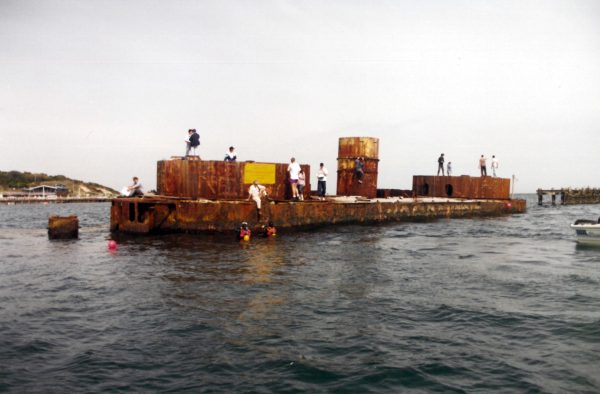
When excavations are taking place in modern times in and around Gallipoli many live rounds are found. Since the mercury fulminate detonators become increasingly sensitive to shock as the years pass on, they discharge the bullets. Turkish made munitions typically give off smoke but British bullets explode without smoke. This was due to differences in the composition of the propellants and so this lack of smoke gave the Allied defence teams a real advantage. Early studies on buried glass show systematic differences in the composition of typical materials used for gun sights and the layering of the dissolving silica network provides an insight into the manner in which the seasonal variations in ground water and temperature have varied since the ill-fated campaign. At present the Australia submarine AE2 (A for Australia, E for the class of submarine and 2 for the number in the fleet of two WWI submarines) lies in the still waters of the Sea of Marmara at a depth of 73 metres. The hull is half buried at the natural water line associated with a floating steel hull. It is being actively cathodically protected by ten-tonnes of zinc anodes and so it is the largest CP protected historic shipwreck site in the world. Detailed inspections are planned for 2027 to assess when the original anodes need to be replaced.
There are many WWI era iron shipwrecks littered around the Australian coasts and one of them is the famous Turret ship, the Clan Ranald, which sank in Gulf St Vincent in 1909. Owing to the position of Kangaroo Island at the entrance to the Gulf, the wreck (and all the gulf) experience a “dodge tide” one day a month, when there is not net flow of water past the wreck, owing to the built up water mass above the wreck balancing out the incoming mass. This results in an 18% lower corrosion rate on that day. Studies by Ian MacLeod, ACA Life Member and P F Thompson lecturer (x3) on historic iron shipwrecks have shown how the corrosion potential is directly influenced by the sea water temperature, which inter-alia, controls the concentration of dissolved oxygen. Each wreck has its own decay equation but the corrosion rate of all iron wrecks falls off logarithmically with water depth. Good wrecks in deeper waters last a lot longer. On the flip side, the corroding iron wrecks directly provide micronutrients for colonising marine organisms which slow down the decay rate and provide nursery grounds for local fish populations.
Image: HMVS Cerberus, Melbourne’s iconic coastal defence vessel, now resting as a breakwater in Half Moon Bay. Commissioned in 1872 and decommissioned in 1926, Cerberus was Australia’s premier battleship, equipped with four ten-inch Armstrong rifled guns capable of launching 650 kg shells over the horizon.
Author: Ian MacLeod